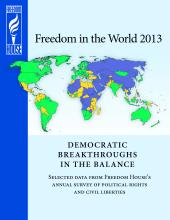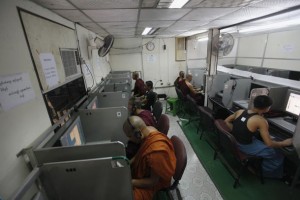Posts Tagged ‘Internet Freedom’ (4 found)
Myanmar: Freedom on the Net 2015
Internet freedom in Myanmar declined during the coverage period of this report in comparison with the progress made since the country undertook liberalization in 2011. 1 The government and security forces stepped up intimidation of internet users during social protests, intensifying conflict in ethnic minority regions, and during preparation for the 2015 national elections […]
• • •Reforming Telecommunications in Burma
In January 2013, the Burmese government announced plans to liberalize the country’s telecommunications sector and invited bids for two nationwide telecommunications licenses.[1] Successful bidders will be allowed to provide a range of services, including mobile and Internet services […]
• • •Freedom in the World 2013: Burma
 In April 2012, opposition leader Aung San Suu Kyi and her National League for Democracy (NLD) swept parliamentary by-elections, having boycotted the main elections in 2010. The NLD’s inclusion in the political process was accompanied by the continued liberalization of the media, internet, and economy, and by the sporadic release of political prisoners. Burma’s relations with foreign democracies also improved during the year, with several significant visits by international leaders. Despite this progress, ethnic and sectarian violence flared in parts of the country, and armed conflicts between the government and some of the country’s ethnic minority militias remained unresolved […]
In April 2012, opposition leader Aung San Suu Kyi and her National League for Democracy (NLD) swept parliamentary by-elections, having boycotted the main elections in 2010. The NLD’s inclusion in the political process was accompanied by the continued liberalization of the media, internet, and economy, and by the sporadic release of political prisoners. Burma’s relations with foreign democracies also improved during the year, with several significant visits by international leaders. Despite this progress, ethnic and sectarian violence flared in parts of the country, and armed conflicts between the government and some of the country’s ethnic minority militias remained unresolved […]
Freedom on the Net 2012
While the military junta that ruled Burma for decades was interested in expanding information and communication technologies (ICTs) for business and propaganda purposes, it also made aggressive attempts to restrict access to digital media and control online content. Elections in November 2010 changed this dynamic […]
• • •









 All posts
All posts